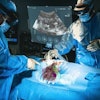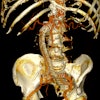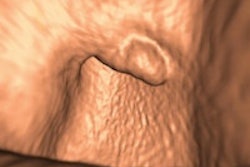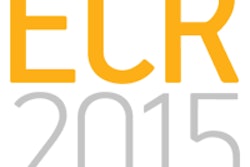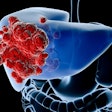
The U.K. Royal College of Radiologists (RCR) has issued revised recommendations for the use of CT colonography (CTC) in suspected cases of colorectal cancer. The 23-page document can be downloaded free of charge from the RCR's website, and includes information about how to plan and deliver a service.
"The number of CT colonography examinations is increasing in the U.K. for suspected colon cancer, having now replaced the barium enema as the alternative imaging investigation of choice when colonoscopy is incomplete or the patient is considered unsuitable for colonoscopy," noted Dr. Pete Cavanagh, the RCR's vice president for clinical radiology, and Dr. Andrea Phillips, president of the British Society of Gastrointestinal and Abdominal Radiology (BSGAR), in their foreword.
Colorectal cancer is the third most common cancer in both men and women with an incidence of 34,044 in England alone in 2011, accounting for 12.4% of all malignancies registered. About 700,000 adults with possible symptoms of colorectal cancer are investigated in England each year, with 70% of new diagnoses made among those 65 and older. The National Health Service Bowel Cancer Screening Programme (NHSBCSP) has been introduced to identify asymptomatic patients with cancer, and a public health initiative, called "Be Clear on Cancer," is designed to encourage those with possible symptoms of colorectal cancer to seek prompt medical advice.
"On this background, the number of people needing colonic investigation is increasing. The two patient populations (screening and symptomatic) are different. However, while there are some differences in the patient pathway, there are common implications for providing a high-quality colonic imaging service," they wrote.
The new edition (Ref No: BFCR[14]9) provides details about population screening of asymptomatic men and women with colorectal cancer, the use of CTC in the NHSBCSP and the symptomatic population, CTC technique in screening and symptomatic populations, professional standards and training, and staffing and cost aspects.
Establishing a high-quality CTC service is no simple task, the authors point out. There are hurdles in instituting a change in U.K. practice from barium enema to CTC, not least that a barium enema service is largely delivered by radiographers, while CTC places additional pressure on CT workload and radiologists' reporting time.
"CTC reporting is estimated to take an average of 20 minutes per case. This is a considerably greater time commitment than is currently required for radiologists reporting a primarily radiographer-led [barium enema] service," they explained. "Specifying a number of CTCs achievable within a business plan will help calculate costs for the department. Adequate allocation of specialist radiologist reporting time to achieve rapid reporting turnaround times, and communication of results is desirable to improve the patient experience of CTC."
Overall, there is no significant difference between CTC and colonoscopy in detection rates of colorectal cancer and large polyps, and CTC complements the delivery of a patient-centered investigation service for suspected colorectal cancer, the authors concluded. There are significant costs, training, and workforce implications in delivering a CTC service, as well as a commitment to quality assurance in maintaining and improving CTC performance and outcomes.
For more details on the guidelines, visit the RCR website.
Editor's note: The image on the home page was courtesy of Dr. Philippe Lefere and Dr. Stefaan Gryspeerdt, Virtual Colonoscopy Teaching Center in Hooglede, Belgium. It comprises antegrade (from rectum to cecum) endoluminal view of the cecum and shows a lesion in a 55-year-old asymptomatic female patient with a family history of colorectal cancer. The diagnosis was tubulovillous adenoma of the appendiceal stump with low-grade dysplasia.


